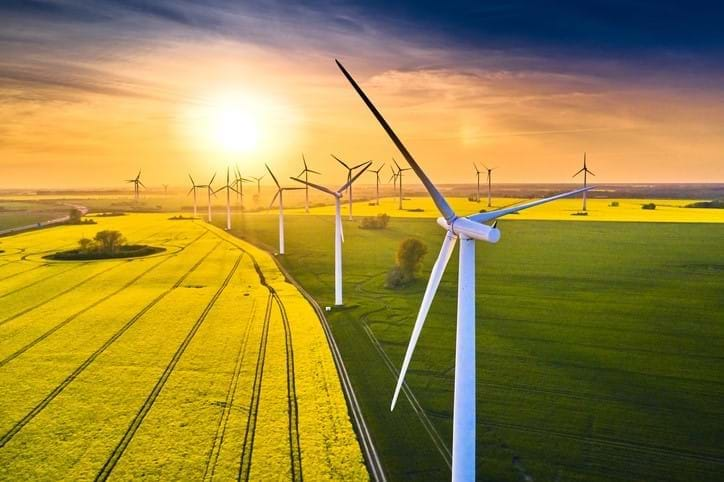Net Zero: What it is and why it matters to you
Read time: 3 minutes

Read time: 3 minutes

Updated January 2025.
The UK Government was the first major economy to set a formal target to hit net zero by 2050. But what exactly does that mean, and how are we going to achieve this?
Net zero is when the greenhouse gases we emit are reduced to the point where they can be balanced out by the greenhouse gases we remove from the atmosphere. In other words, it means no negative impact on the climate overall.
Climate scientists like to use the metaphor of a bath – if you pour in water faster than it empties through the plughole, the bath will fill up and eventually overflow. But if you balance the amount you put in with the amount draining away, by slowing down the tap and/or increasing the size of the plughole, then the water in the bath will remain level.
Net zero is also often known as ‘carbon neutral’, because greenhouse gas emissions are generally measured in CO2 (the most prominent greenhouse gas). You may even have come across the term ‘carbon negative’, which takes things one step further by removing more greenhouse gases from the atmosphere than you put in, resulting in a net positive impact on the environment. Some leading companies such as Microsoft are already moving in this direction.
In 2015, world leaders came together in Paris for a UN summit on climate change, formally known as a COP. Paris was COP21, and it resulted in an historic global climate agreement.
Nearly 200 countries agreed to take action to reduce their emissions in a bid to limit global warming to 1.5°C above pre-industrial levels. Climate scientists say the global community needs to reach net zero by the middle of the century at the latest for a reasonable chance of achieving this.
This is no mean feat. Global temperatures have already risen by 1°C, and we’re on course for 3-5°C unless more action is taken.
The UK became the first major country to set a net zero target of 2050 in 2019. Achieving this will require a complete transformation in almost all aspects of society, if we are to reduce emissions to as close to zero as possible. Strategies include being far more efficient and intelligent in how we generate and use energy, how we consume materials and other resources, how we transport ourselves and our goods, and how we manage our waste.
We will also need to increase the amount of CO2 we remove from the atmosphere by changing the way we use land – for example by planting trees and restoring nature – and by developing new technologies that capture and store carbon from the air.
Much of this is driven by policy with the initial 2021 Net Zero Strategy setting out policies and commitments to achieve net zero, being updated with the 2023 Net zero growth Plan, which focused on scale and deployment of green technology. Progress was criticised by the Climate Change Committee, an independent body established to measure performance against targets, and a new path to net zero is expected in 2025.
Ultimately, achieving much of what is required for net zero will fall on the shoulders of businesses. Urged on by consumers, shareholders, climate-related legislation and the risks of climate change itself, many of the world’s largest companies have already drawn up their own net zero plans. Often, these include targets far in advance of 2050.
The number of corporate net zero commitments have tripled over the last year, with companies signing up to the Race to Zero and declaring their formal net zero targets.
These net zero commitments will have a profound impact on supply chains - in 2020, the number of large-scale buyers asking suppliers for environmental data increased by 24 per cent.
Simultaneously, the cost of doing business has risen dramatically following a number of key geopolitical events. This increases the pressure on businesses to decarbonise in order to drive growth, increase competitiveness and manage cashflow in the longer term.
At Green Economy, we're on hand to support businesses to achieve net zero, no matter whether they are yet to start or need advice on implementing their plans.
Get in touch to speak to one of our environmental business consultants, we'd love to help you achieve net zero.
Watch this short video by The Economist, which explains what net zero is and how it can be achieved.
Do you install green technology or provide net zero services?
Access exclusive sales opportunities including solar, LED lighting, heat pumps, EV charging and battery storage and energy management systems.
Create a free profile on the Marketplace to receive exclusive opportunities and sales to grow your business.
Create a free profileSearch for a local, trusted green tech supplier
Search for local suppliers by technology, location and experience on the Green Economy Marketplace.
Need more help? We can help you navigate the journey to net zero with expert support and guidance.
Green Economy MarketplaceCollaborate, innovate and grow
Join our network to hear industry trends, make new connections and foster new partnerships.
Callum Henderson, Nemiah said:
“It was valuable event for us, we generated more leads this morning than we had done in an entire month!"
Explore events calendar
Share